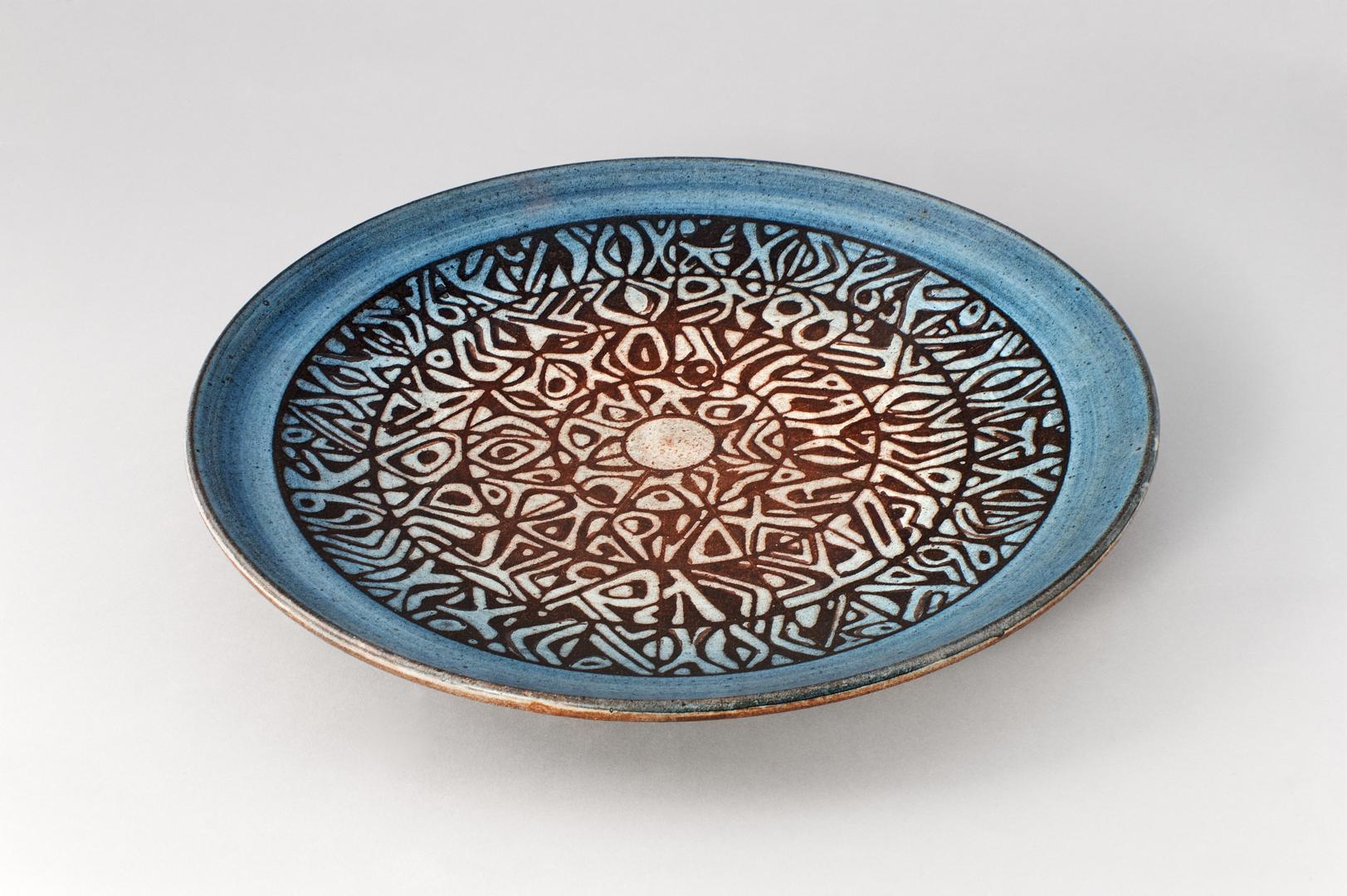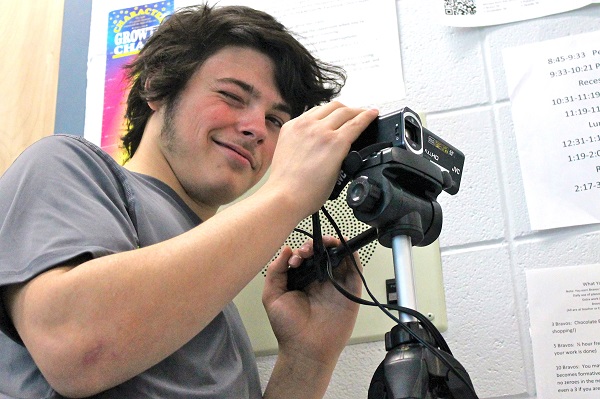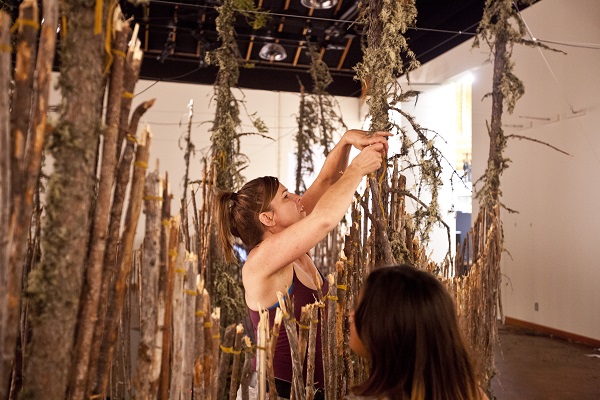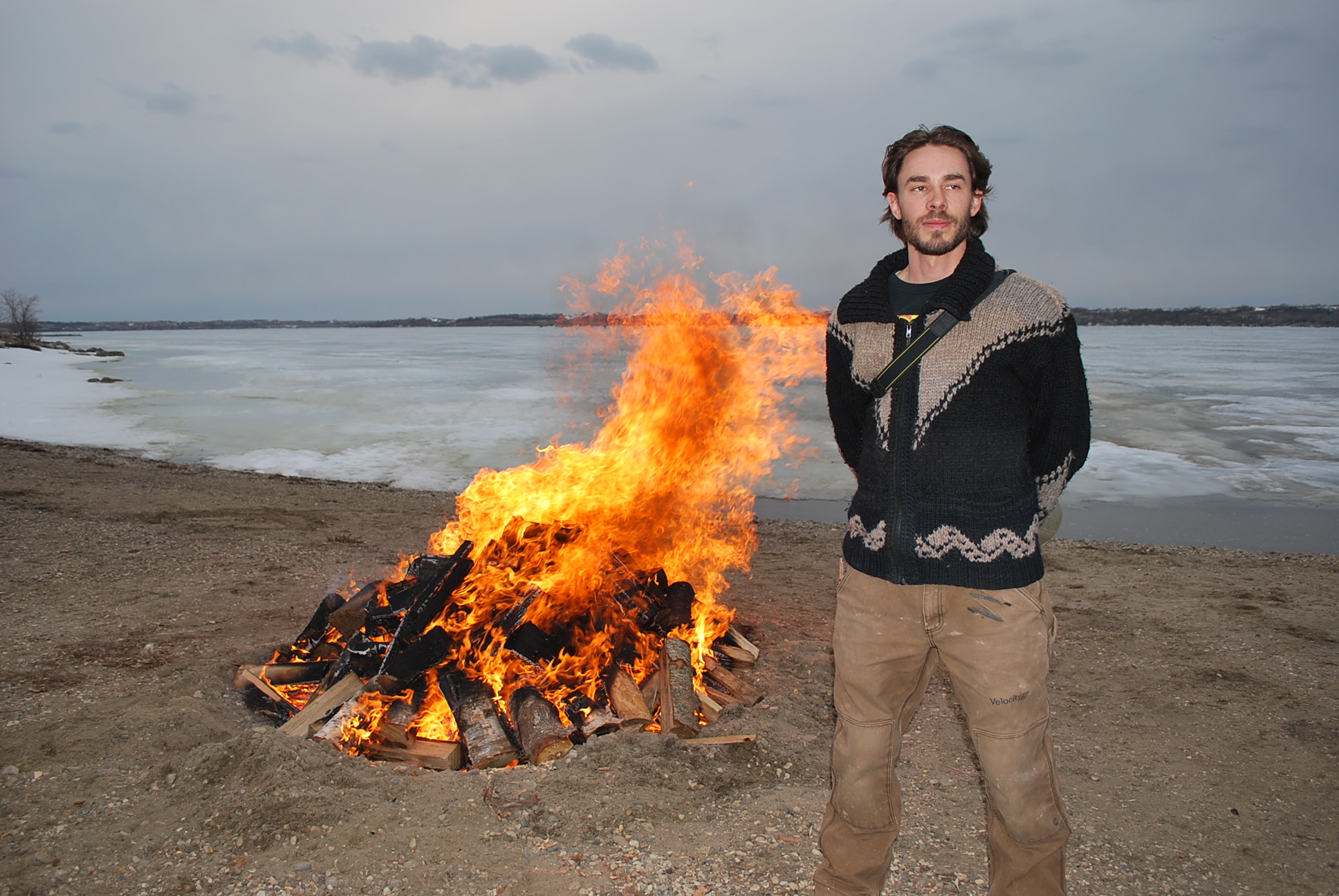
As the Saskatchewan Arts Board celebrates our 70th anniversary this year, we also celebrate 50 years of supporting artist residencies in the province.
The seeds of the artist-in-residence program were sown a decade earlier, however. The Saskatchewan Arts Board started a craft house in the town of Fort Qu’Appelle in the late 1950s. Folmer Hansen and David Ross became artists-in-residence there, teaching pottery and making their own creations. In 1960, they purchased the building from the Arts Board and created Hansen-Ross Pottery, which operated for 40 years and produced tens of thousands of pieces of pottery. Their work is known around the world for its beautiful design and high quality.
Our first official artist-in-residence program began in 1968, at about the same time as the Arts Board was encouraging the creation of local arts festivals and the establishment of community arts councils. We created a Community Artists program, and the first artist-in-residence, Wayne Morgan, undertook a year’s residency in Weyburn. The program was intended as an incentive grant to assist in establishing permanent, municipally supported artist-in-residence programs throughout the province. Although municipal governments did not respond to the idea, the artist-in-residence program was very successful and well-received in the communities where it was hosted.
Throughout the years, the program has been known as the Community Arts Consultant, the Resident Artist program, the Artist in Residence program, Creative Partnerships and ArtsSmarts. There are now two programs at the Arts Board that support artists-in-residence: Artists in Communities and Artists in Schools. Both receive funding through SaskCulture from the Saskatchewan Lotteries Trust Fund for Sport, Culture and Recreation, and the Artists in Schools program receives additional funding from the Saskatchewan Ministry of Education.
Artist-in-residence programs have been especially popular in smaller communities. This is a sign of the impact that the arts can have when a committed, professional artist works directly with the community over a period of time. A number of residencies supported by Arts Board grants have spurred the creation of long-term programs and organizations.
In 1998, artists-in-residence Ward Schell and Jennifer McRorie engaged people at Regina Beach in weekly art workshops and classes, gallery tours, community events and fundraisers. The activities were hugely popular, with up to 40 people attending art appreciation classes each week and a sold-out crowd of 350 people at the first fundraiser. During the second year of the residency, community members recognized that they wanted the activities to continue after the official residency was complete. The community pulled together to create the Last Mountain Lake Cultural Centre. Today, the centre hosts musical performances, dance and yoga classes, studio art classes, touring art shows and gallery shows.
 Visual artist Heather Cline undertook a residency at Saskatchewan Communications Network (SCN) in 2004, where she did special programming with staff and worked on her own artistic practice. During her time there, she became very familiar with SCN’s programs, including their distance education technology. This led to the idea of a distance education artist residency project, LIVE Arts, which was launched in 2005. LIVE Arts is an interactive experience that engages teachers and students in all corners of Saskatchewan. Professional artists provide grade-specific broadcasts in drama, dance, music and the visual arts. In its first year, LIVE Arts engaged 107 students. During the 2017-18 school year, the program engaged 40,000 students, including more than 8,000 from outside Saskatchewan!
Visual artist Heather Cline undertook a residency at Saskatchewan Communications Network (SCN) in 2004, where she did special programming with staff and worked on her own artistic practice. During her time there, she became very familiar with SCN’s programs, including their distance education technology. This led to the idea of a distance education artist residency project, LIVE Arts, which was launched in 2005. LIVE Arts is an interactive experience that engages teachers and students in all corners of Saskatchewan. Professional artists provide grade-specific broadcasts in drama, dance, music and the visual arts. In its first year, LIVE Arts engaged 107 students. During the 2017-18 school year, the program engaged 40,000 students, including more than 8,000 from outside Saskatchewan!

Artist residencies also create programming that can have a ripple effect on both communities and organizations. Common Weal Community Arts undertook a residency in Patuanak, 700 kilometres north of Saskatoon, in 2015. Artist Michèle Mackasey has worked with the community, leading workshops in studio painting and drawing, and supporting Elders and artisans to guide exploration in basket-making, beadwork and moose hair tufting. She also initiated a collaborative art project honouring the memory of two of the community’s youth, who were tragically lost in a house fire. These creative activities were valued as ways to keep youth, Elders and the community integrated and engaged, thus helping to build community strength and resilience. The Arts Board grant laid the groundwork for Common Weal to receive a Canada Council for the Arts grant to undertake the art exhibition, Axenet’i Tth’al (orFringe in English), in 2017, at Wanuskewin Heritage Park in Saskatoon. The exhibition evolved from Mackasey’s residency and featured a large forest installation, complete with light, sound and smells. The residency also helped Common Weal to build contacts in the area, which will lead to future programming in northern Saskatchewan.
The artists-in-residence programs at the Saskatchewan Arts Board are currently under review. Consultations were held in 2017, to determine how the programs can evolve to best serve both communities and artists. The next application deadline for both the Artists in Communities and Artists in Schools programs is May 1, 2018. Application forms are currently in development, based on the review, which you can read here.
We look forward to the continued impact the Arts Board's artists-in-residence programs will have on artists, arts organizations and communities in the province.
Photos
Top:
Hansen-Ross Pottery
Platter, 1972
stoneware, glaze
Photo: Gabriela Garcia-Luna
Middle:
Ceramist Jay Kimball was an artist-in-residence at the Last Mountain Lake Cultural Centre in 2012. The finale of his residency was a pit firing of tiles created by community members.
Photo courtesy of Last Mountain Lake Cultural Centre
Middle:
A student at Maymont Central School helps film a LIVE Arts broadcast in 2014.
Photo: Jan Friesen
Bottom:
Michèle Mackasey installing the exhibition, Axenet’i Tth’al, at Wanuskewin Heritage Park in 2017.
Photo: Patricio Del Rio

